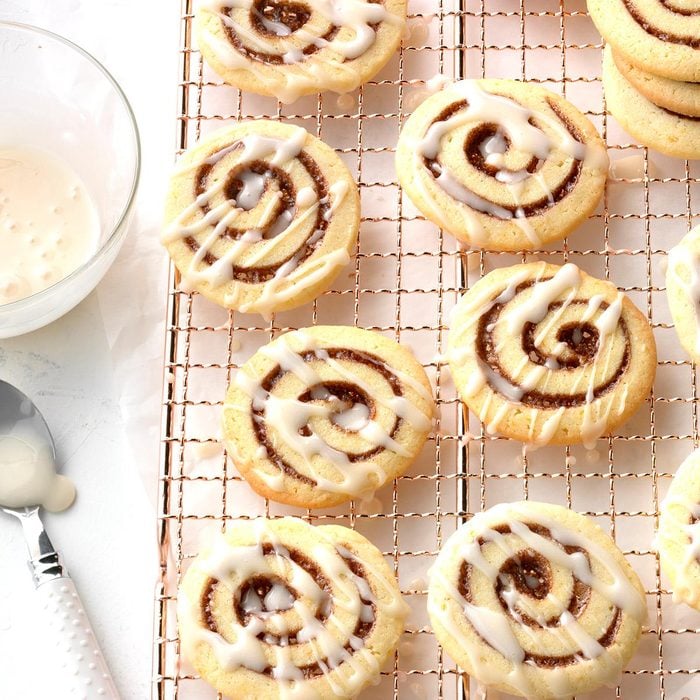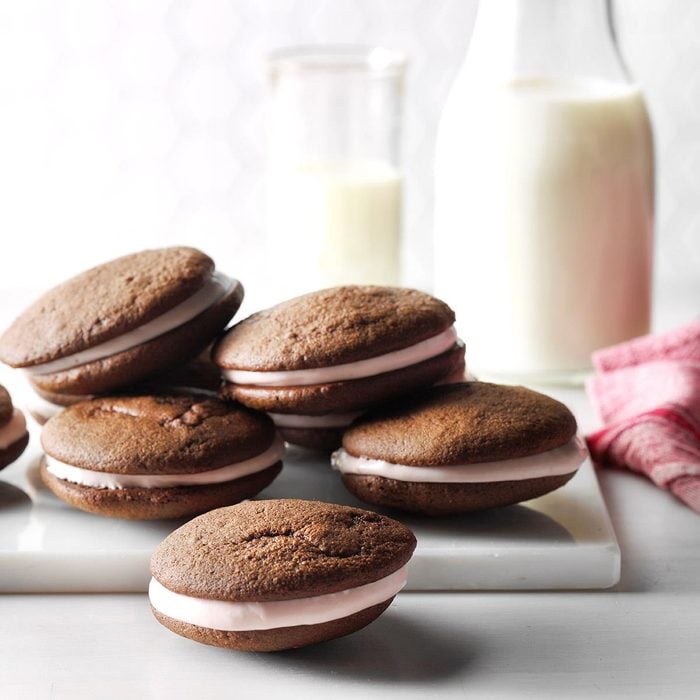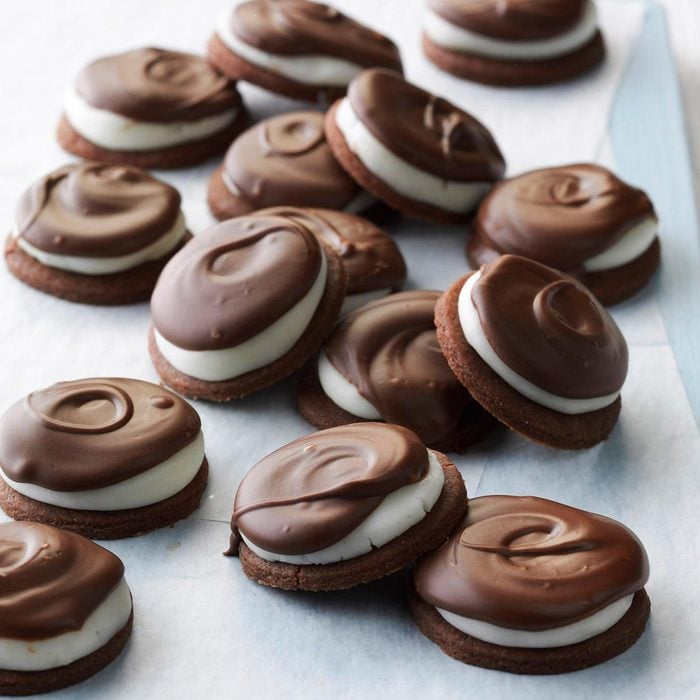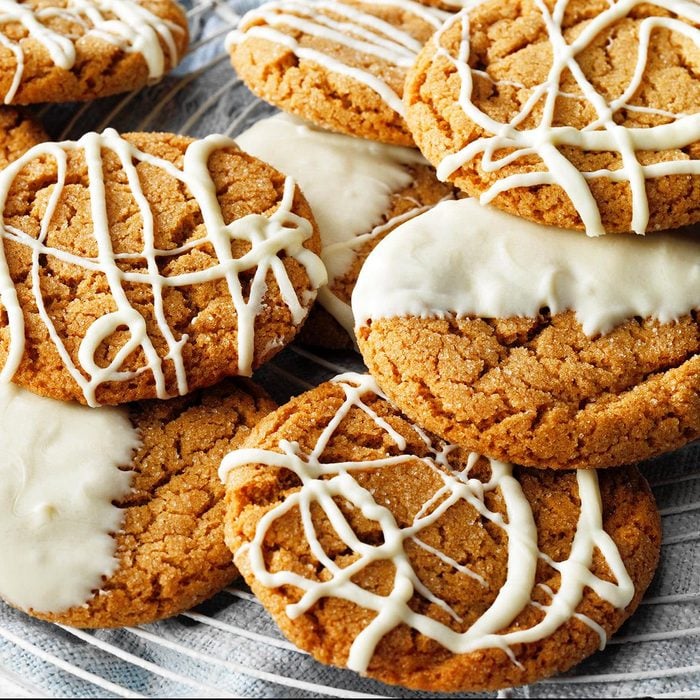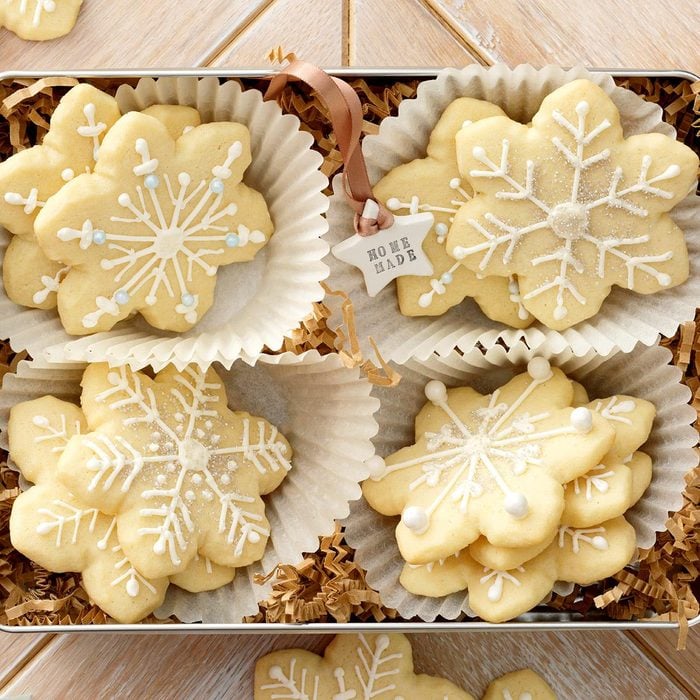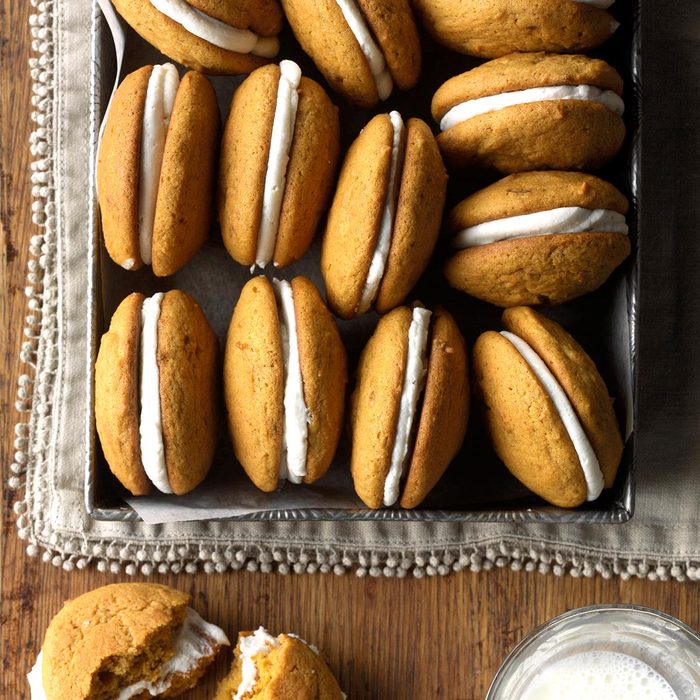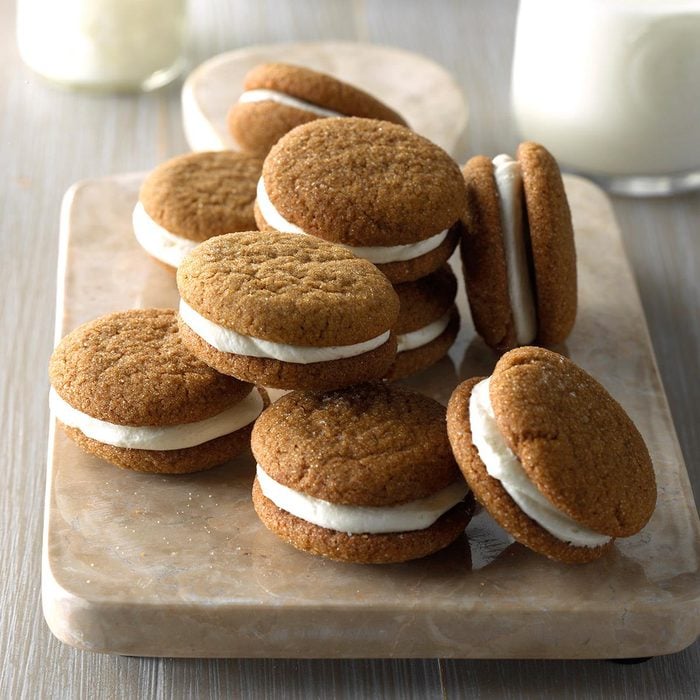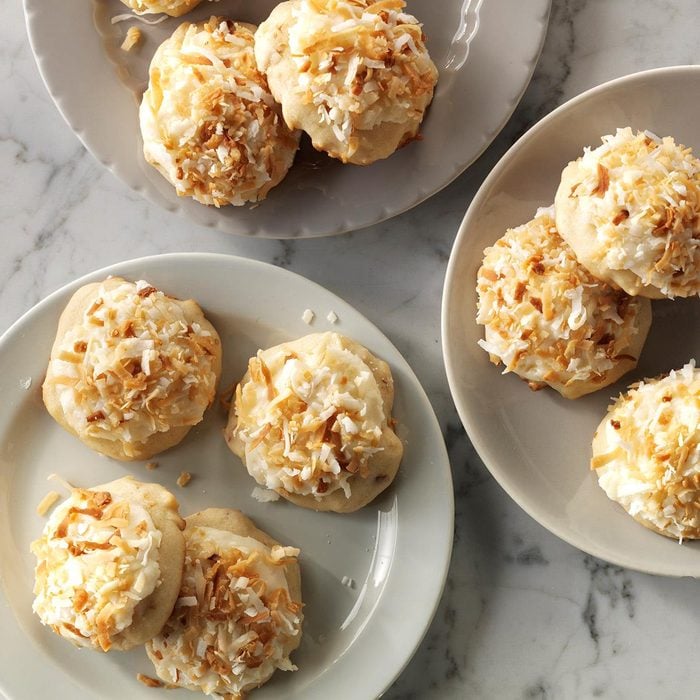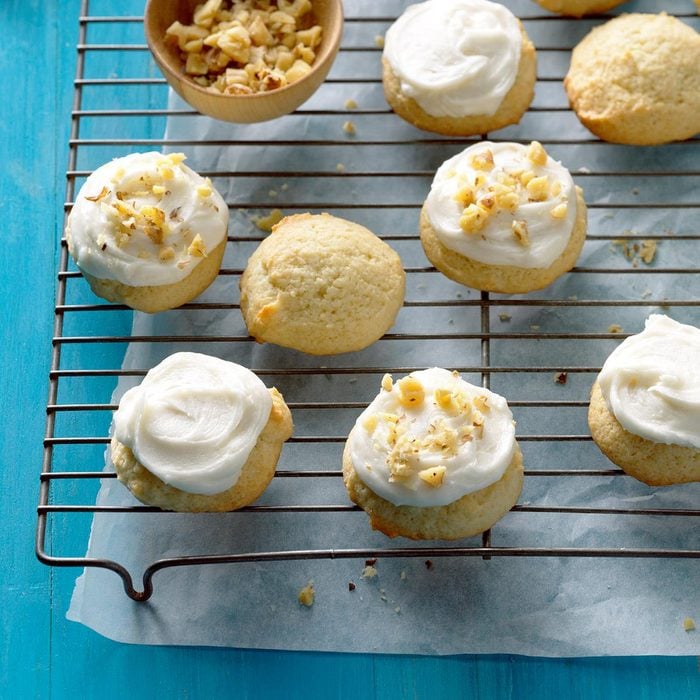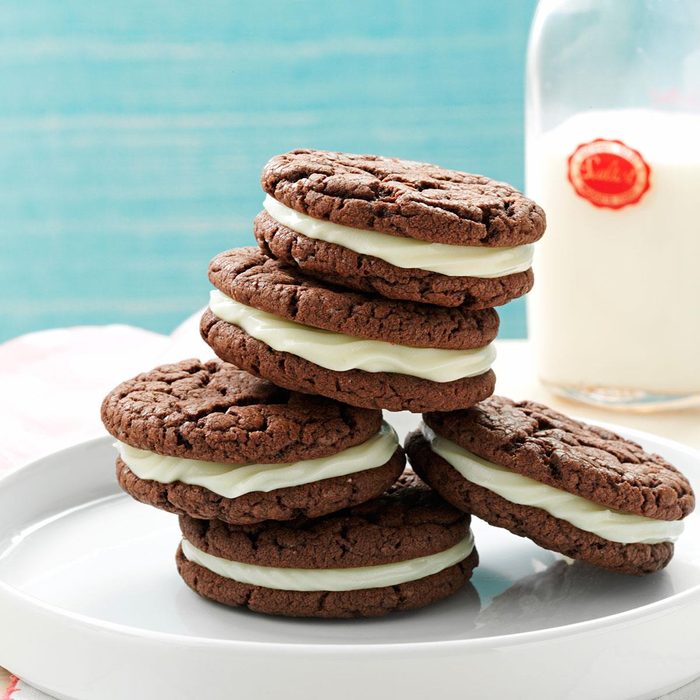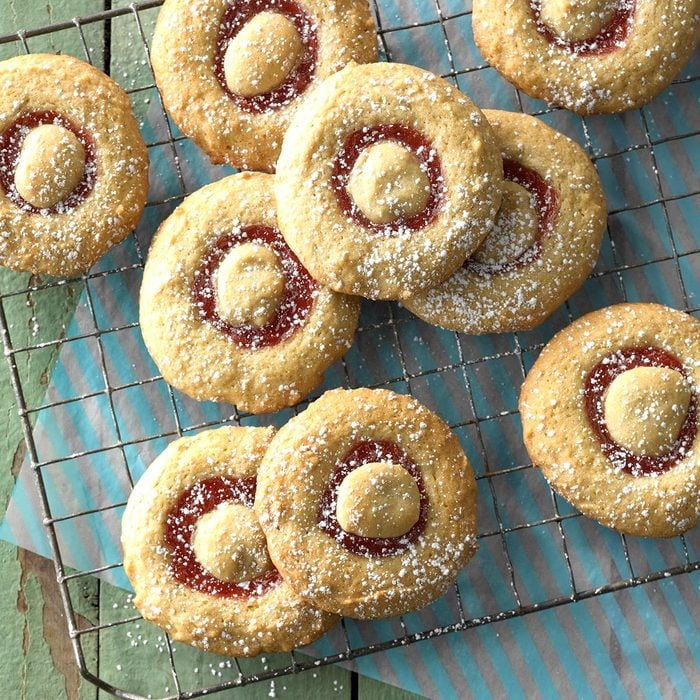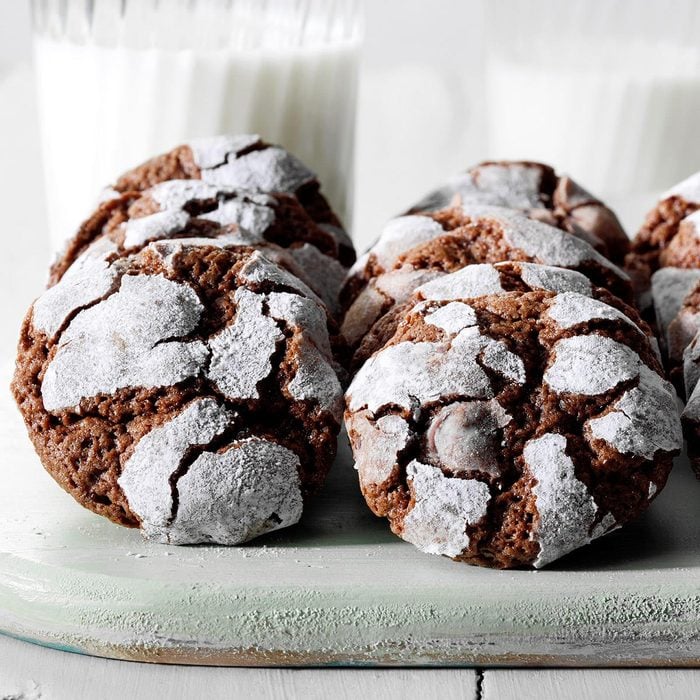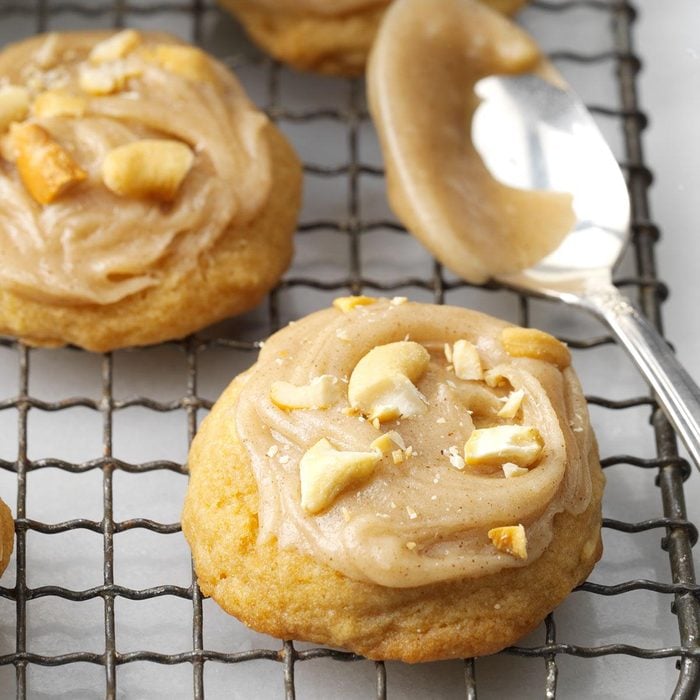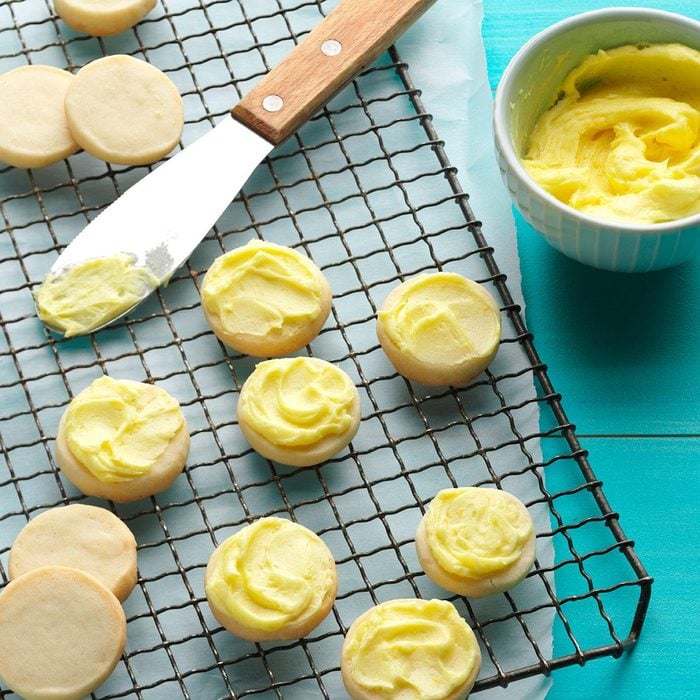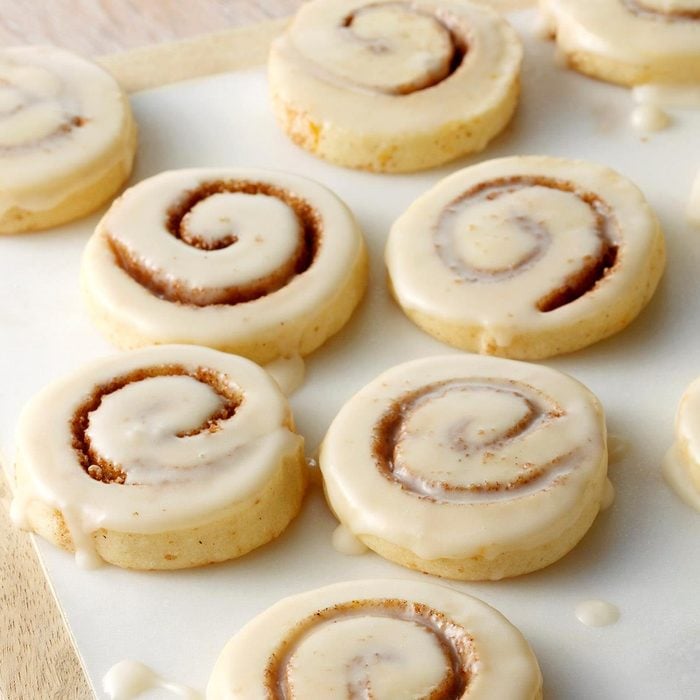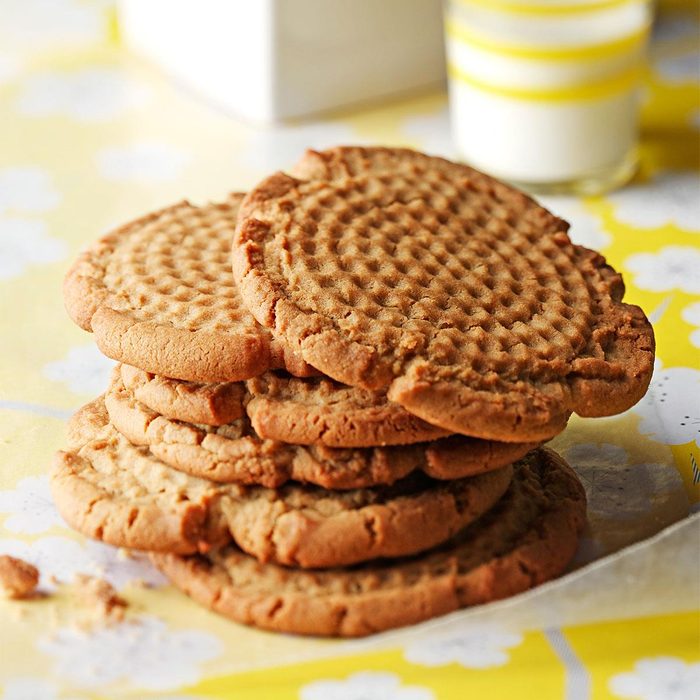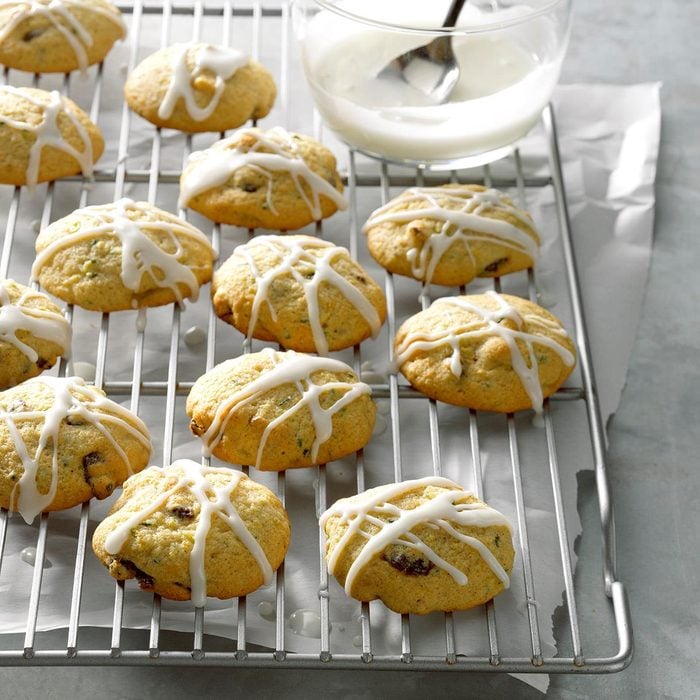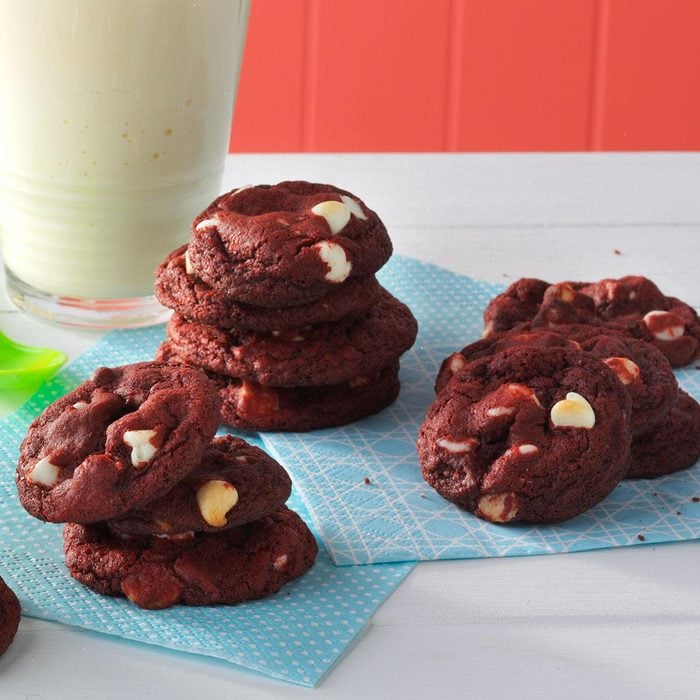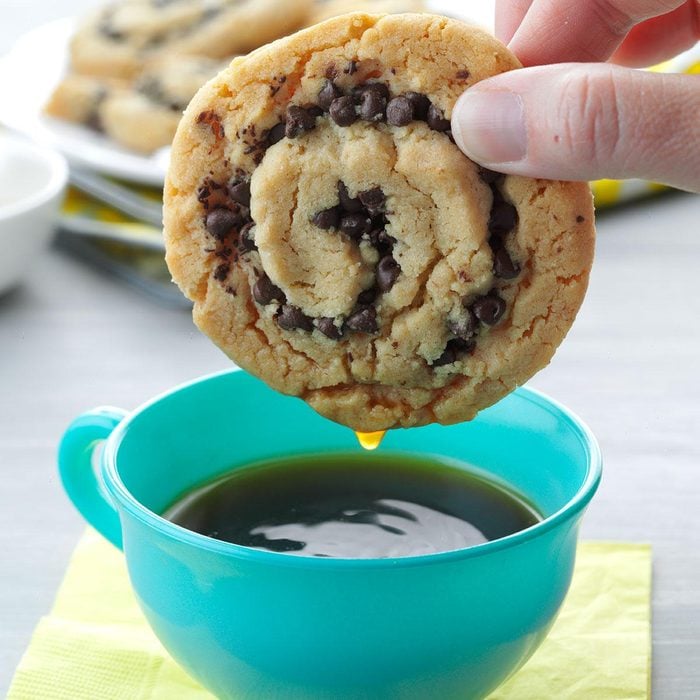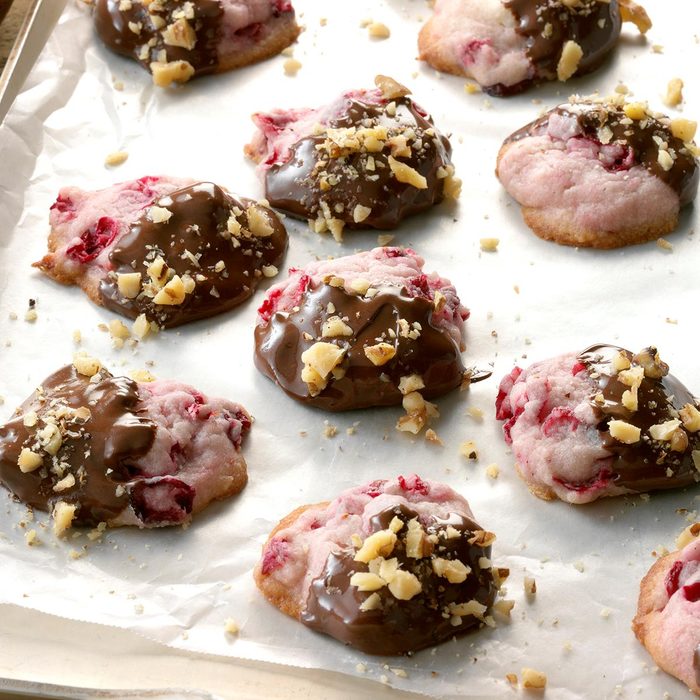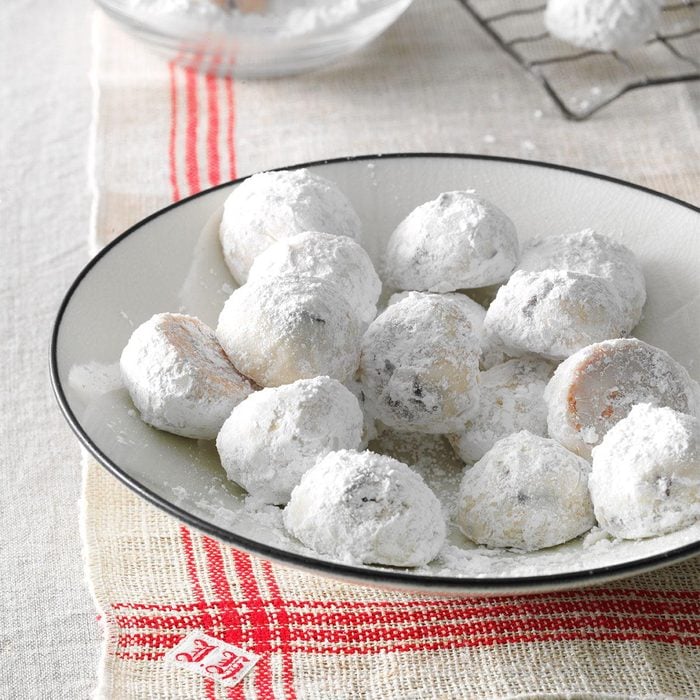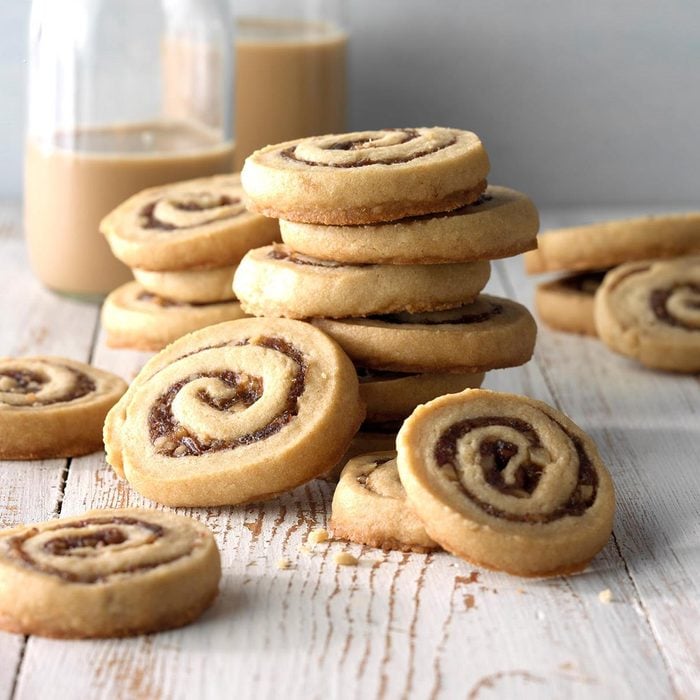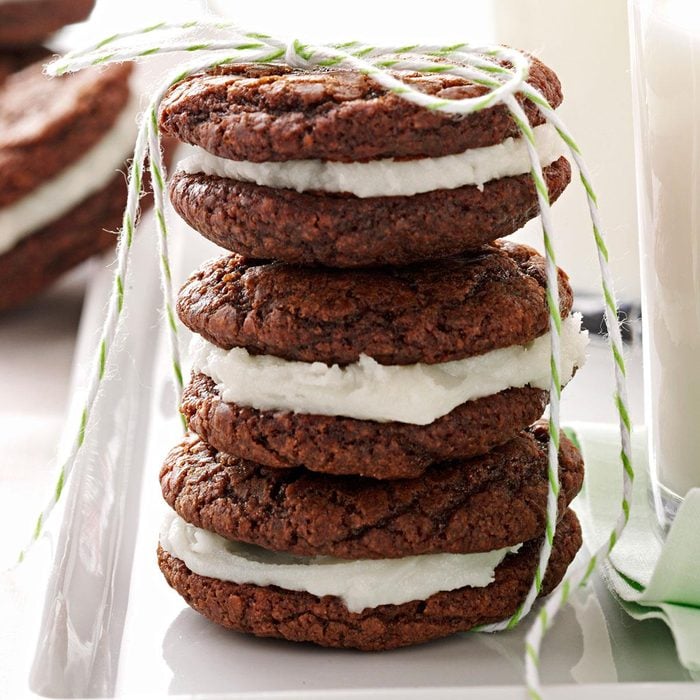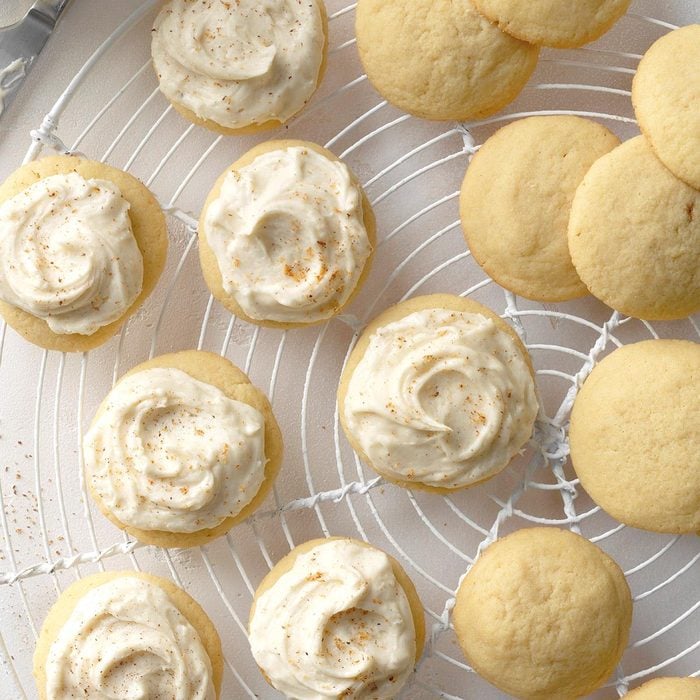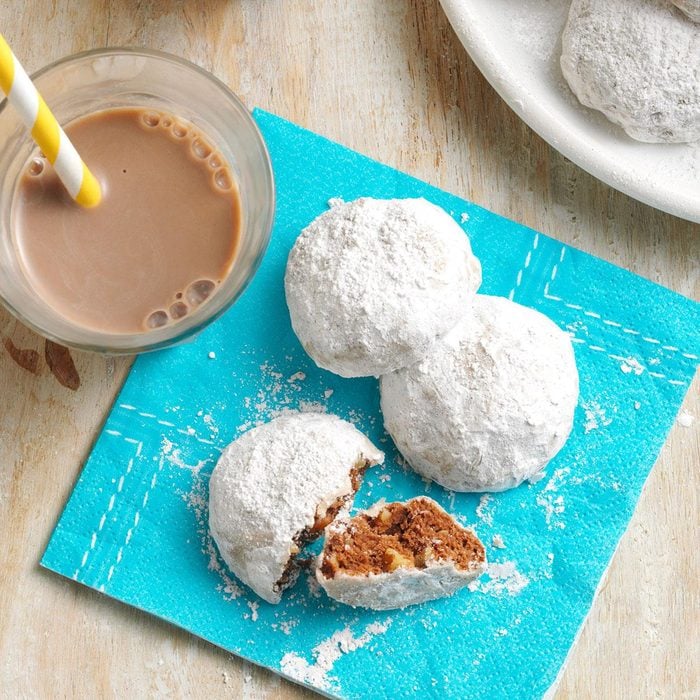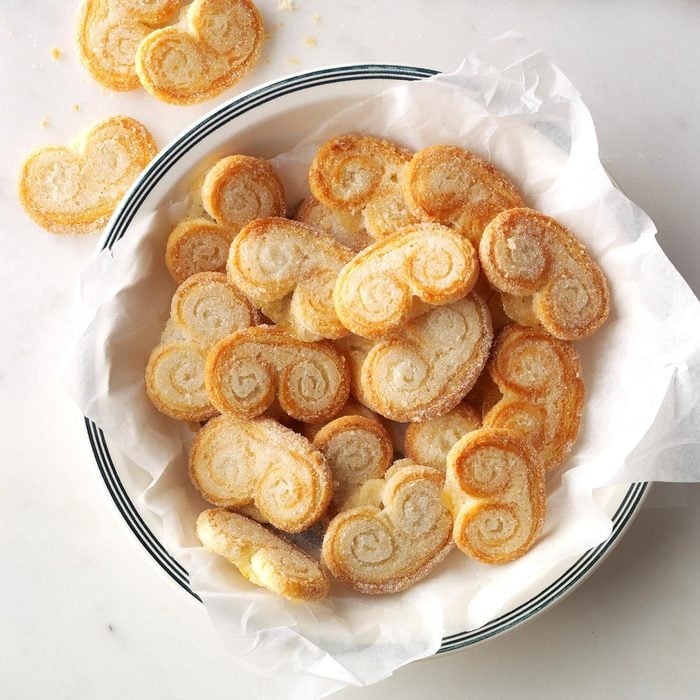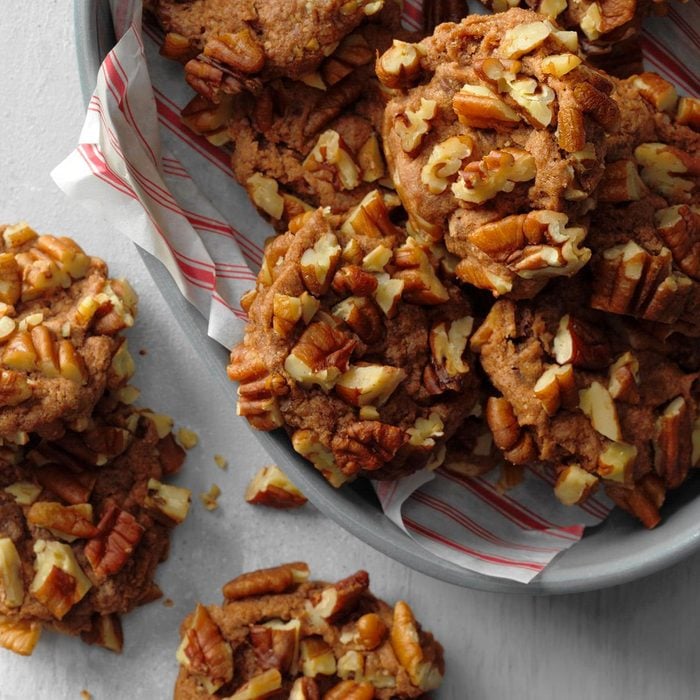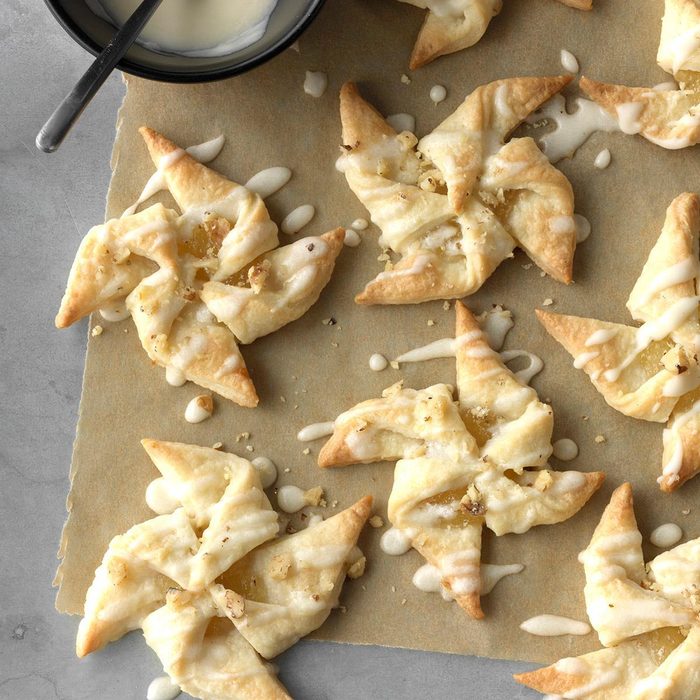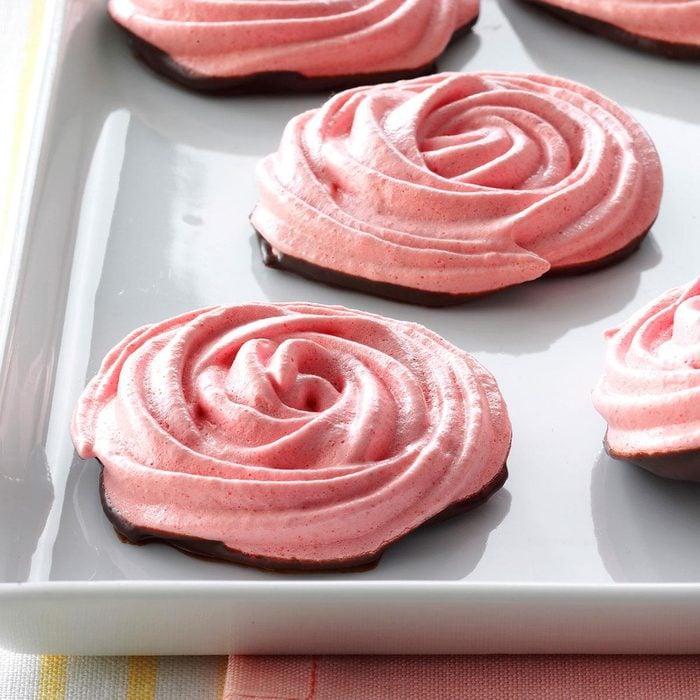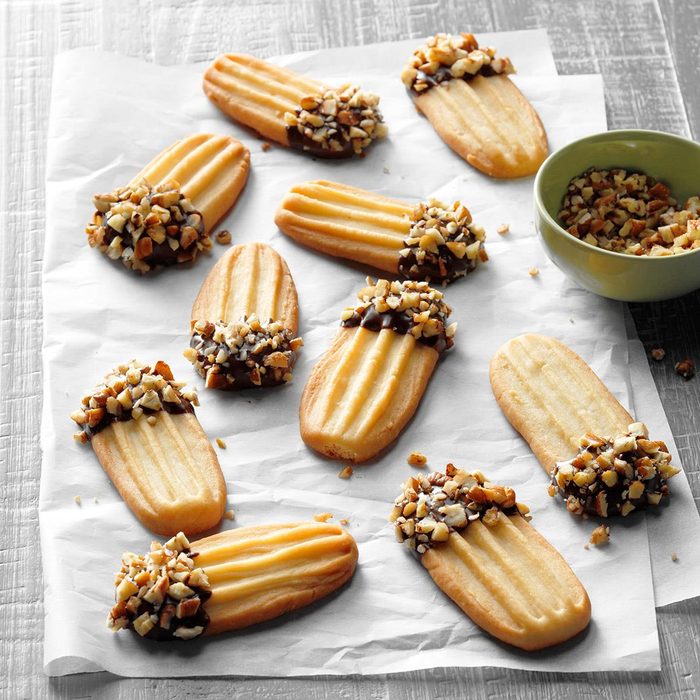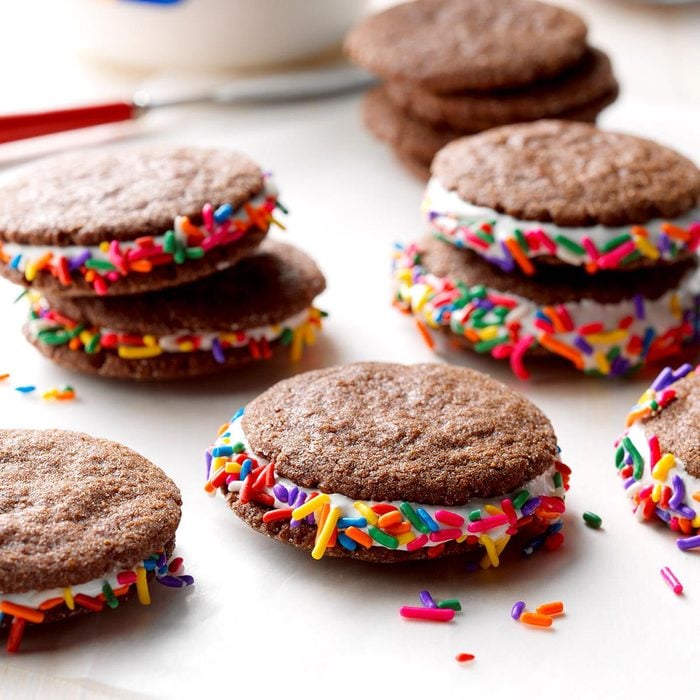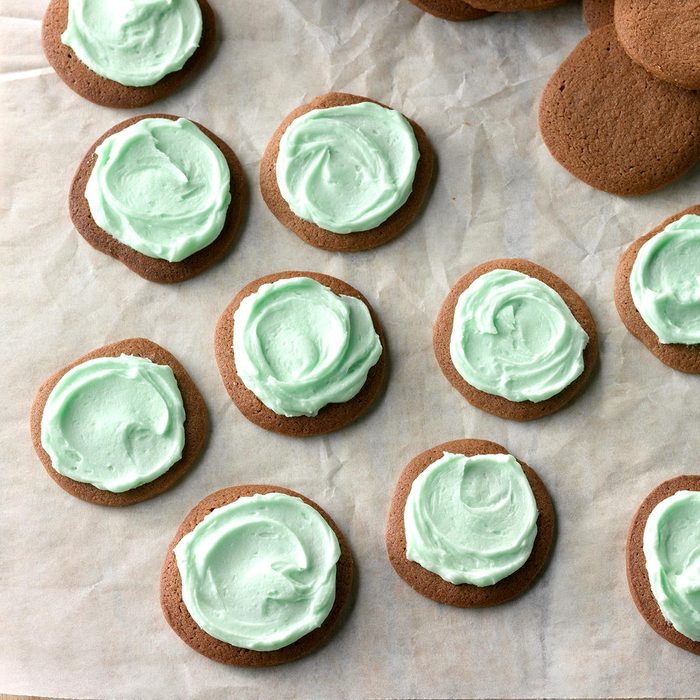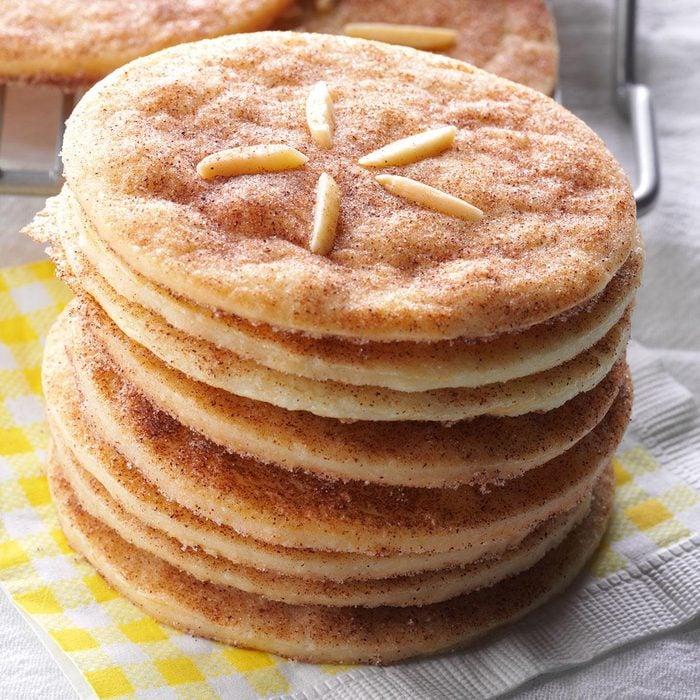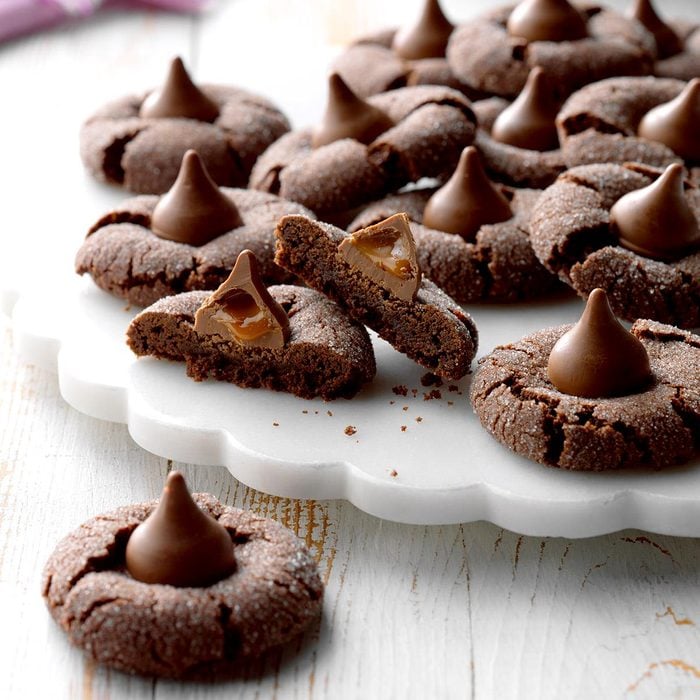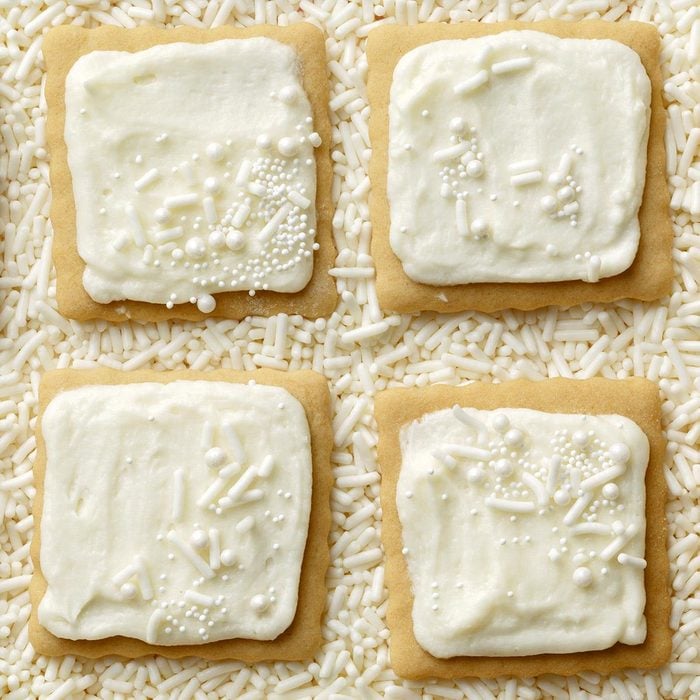ⓘ
These days, no fancy bakery display is complete without an array of French macarons. And who can resist picking up a few of these airy cookies filled with rich buttercream? Now, you can certainly buy dozens to take home, but you can also learn how to make macarons yourself so you can enjoy them anytime.
What Are French Macarons?
Even if you’ve enjoyed these cookies before, you may still be asking what macarons are exactly. These cookies are an enigma: chewy yet crisp, airy but rich.
Macarons (which are not the same as macaroons) are meringue-like cookies made with almond flour. These light cookies are baked until crisp on the outside and chewy on the inside. Then the cookies are filled with buttercream, though you may see some versions that are filled with jam, ganache or citrus curd. Find out why macarons are so expensive.
How to Make French Macarons at Home
 TMB Studio
TMB Studio
We won’t mislead you: Learning how to make macarons is challenging. However, it’s one of those skills so many bakers want to check off their baking bucket list. With a little patience and plenty of tips from Josh Rink in the Taste of Home Test Kitchen, we’re confident you’ll enjoy macaron success.
The first step from our Test Kitchen is this: Use a kitchen scale to measure out the ingredients. Macarons require precise measurements, and a scale ensures you’ll get all the right proportions. We’ve included the weights here to make it easy.
Ingredients
- 1-1/3 cups almond flour (125 grams)
- 2-1/4 cups confectioners’ sugar (225 grams), divided
- 3 extra large egg whites (100 grams), room temperature
- 2 tablespoons superfine sugar (25 grams)
- 1/8 teaspoon salt
For the buttercream:
- 1/4 cup unsalted butter, softened
- 1 cup confectioners’ sugar
- 2 tablespoons heavy whipping cream
- 1/2 teaspoon vanilla extract
- 1/8 teaspoon salt
Go to Recipe
Tools You’ll Need
- Flexible spatula: To fold the egg whites and almond flour together, make sure you have a large, flexible spatula on hand. This one that’s covered in mini macarons is perfect for the job.
- Piping bags: To get that just-right macaron shape, a piping bag and basic piping tip are essential.
- Baking mat: This silicone baking mat comes with guides printed right on top. You want your macaron shells to be identical in size, and these lines help.
Directions
Step 1: Pulse the almond flour
Before you break out your stand mixer, pull out the food processor. Pulse the almond flour and 3 tablespoons of confectioners’ sugar together until very fine. Then pass the mixture through a fine mesh sieve and get rid of any large pieces that remain.
This may seem like overkill, but a fine texture is essential. “Even fine almond flour will have large bits in it,” says Josh. “Pulsing in the food processor and sifting will lighten the mix and remove any chunks.”
Test Kitchen Tip: Make sure you’re opting for almond flour that’s processed without the almond skins. These skins can cause the flour to have an imperfect consistency.
Step 2: Whisk egg whites
 TMB Studio
TMB Studio
Next, break out your stand mixer fitted with the whisk attachment. Make sure the bowl and the whisk are squeaky clean for success with this step.
Add the egg whites and salt to the bowl and whisk on medium-low speed until frothy. Then slowly add the superfine sugar. “Use the superfine stuff,” says Josh. “It dissolves better in the meringue.” Take your time; this process will take about 2 minutes.
Then add in the remaining confectioners’ sugar and bump up the speed to high. Whisk until the meringue is glossy and stiff peaks form—about another 2 to 3 minutes more.
Step 3: Fold
 TMB Studio
TMB Studio
This is the first major hurdle when learning how to make macarons: getting the folding just right. If you’re not familiar, folding is a gentle way of incorporating one mixture into a light, airy mixture.
When you’re ready to start, add your meringue into a large, wide-mouthed bowl. Josh recommends these large metal mixing bowls that you’ll often see in restaurants and in our Test Kitchen. “You’ll need the space,” he explains.
Then add in about a third of the almond flour mixture into the meringue and fold lightly. Start at the outside, scrape along the bottom of the bowl towards you with a flexible spatula, continue up the side and scoop the mixture over the top. When that first bit of almond flour is well incorporated, add in the next third of the flour mixture and then the last third.
As you work, turn the bowl and just continue to work slowly and carefully starting along the outside of the bowl. You do not want to deflate the egg whites. Egg whites give these cookies their signature texture.
In the end, you don’t want to see any large bits of egg whites. Undermixed batter can cause the cookies to crack. Your finished macaron batter should be uniform and have the texture of “slow lava,” in Josh’s words. “When you pull your spatula through the batter, you’ll see the bottom of the bowl before the batter flows back together.”
Step 4: Pipe the macaron shells
 TMB Studio
TMB Studio
Next, transfer your macaron batter into a piping bag fitted with a basic round piping tip; something like this #1A tip works well.
Then take your cookie sheet outfitted with a pastry mat or parchment paper and start piping. Be mindful of keeping the bag and the tip perpendicular to the cookie sheet. Keeping this posture is critical for evenly shaped macarons, according to Josh.
When it comes to the silicone pastry mat or parchment, “I like to use a template; even after all these years,” says Josh. This ensures that your cookies are exactly the right size and shape for sandwiching together later.
If you don’t have a pastry mat with the outlines already marked, you can draw your own template onto a sheet of parchment. Macarons are generally about 1-1/2 to 2 inches across, so break out that kitchen ruler and get tracing. If you need a guide, trace around the lip of a shot glass; it’s the perfect size.
Test Kitchen Tip: Use a cookie sheet (that’s a baking sheet without a lip) as compared to a rimmed baking sheet. “A rim can cause the cookies not to rise properly later,” explains Josh.
Step 5: Tap and rest
With your cookies perfectly piped, give the cookie sheet a tap on the counter to release any air bubbles inside the batter. If you notice any remaining large air bubbles, you can pop them carefully with a toothpick.
Then walk away. That’s right. Josh says, “Once they’re piped it’s important to let them sit so they can form a shell.”
On a dry day, this will take about 15 minutes; but if humidity is high, it may take over an hour. The macarons are ready to bake when you tap the top of a shell and it’s no longer tacky.
Step 6: Bake
 TMB Studio
TMB Studio
Before you pop your cookie sheet of macaron shells in the oven, Josh recommends checking your oven’s temperature. Because these cookies are a bit more temperamental than your standard chocolate chipper, precise temperature is key.
You can use an affordable oven thermometer to verify the temp is correct, and when you have time, learn how to calibrate your oven.
Once you’re sure that your oven is truly at 300ºF, bake the cookies one tray at a time for 14 to 16 minutes.
Remove them from the oven and allow the cookies to cool completely on the baking sheet—no need to move them to a wire rack. “They won’t overbake,” says Josh. These cookies are fragile, though, so handling them as little as possible is for the best.
How do you know if your macarons are fully baked? Josh says, “You’ll know when they’re properly baked when they’re slightly crispy and they release easily from the parchment paper.” Macarons that have been baked correctly will also have a shiny top without cracks and a lip around the bottom edge of the cookie that pastry chefs refer to as feet.
Step 7: Make the filling
 TMB Studio
TMB Studio
Once your shells are done baking, you can move on to making a lush buttercream filling. After baking the macaron shells, this part is a breeze!
Start by beating softened butter in the bowl of a stand mixer (your hand mixer will also work here). Slowly add in the confectioners’ sugar until well incorporated. Then add in the cream, vanilla extract and a pinch of salt. If you’re looking to add color, this is the time to add your food coloring as well. Beat the mixture until the buttercream is velvety smooth.
Add the buttercream to a pastry bag fitted with a basic round tip.
Test Kitchen Tip: Vanilla extract is the go-to for flavoring frosting, but feel free to use other extracts as well. Peppermint, lemon or almond extract are all great substitutions.
Step 8: Put it all together
 TMB Studio
TMB Studio
All that’s left is to pipe a bit of buttercream onto half of the macaron shells. Sandwich the cookies together to make perfect macarons. You can enjoy them right away or cover and refrigerate them until you’re ready to indulge.
After all that work, we don’t blame you if you want to enjoy a few with a glass of Champagne!
Macaron Tips from Our Test Kitchen
 TMB Studio
TMB Studio
We know that making your first batch of these French cookies is just the beginning. Our Test Kitchen answers your most frequently asked macaron questions.
Can you make macarons without almond flour?
Almond flour is traditional for this type of cookie, but you can use alternatives! According to Josh, you can swap out the almond flour for another type of nut flour like hazelnut, pistachio or pecan flour. Follow the exact same steps as you would for a traditional macaron (pulsing in a food processor and sifting).
If you don’t have nut flour on hand, you won’t be able to make macarons. Nut flour is essential for making these cookies. Fortunately, though, finding almond flour is easier than ever. Many big box stores carry it and you can always find it online.
How long does it take to make macarons?
Macarons are one of those all-day baking projects, so don’t attempt to make these after dinner one evening! Set aside a good three hours to make these cookies. There will be some downtime with allowing shells to rest and bake, though.
Can you dye macarons?
Yes, you can add food coloring to macaron batter. But before you rummage in your baking supplies, take this bit of advice from Josh to heart: “Always use gel food coloring, never liquid.”
Liquid dye will alter the consistency of the batter which you do not want with a fussier recipe like this. Gel coloring, on the other hand, will add plenty of potent color without compromising the consistency.
What if your macarons don’t have “feet?”
The foot of a macaron is that ruffled ridge along the outside edge. If your macarons don’t have that edge and lift, it’s because they didn’t rest long enough before going into the oven, according to Josh.
Humidity has a major effect on how the shells dry. On a cool, dry day in February, the shells can dry in 15 minutes; on a humid July day, it could take an hour or more. Make sure to test the dryness of the shells by tapping the top with your finger. They are dry enough to bake when the top is no longer tacky.
Without this feature, your macarons will not have the right texture. You’ll want to start again.
What if the macaron shells are hollow?
Hollow shells are also a common macaron mistake. Hollow shells (versus ones that are crisp outside and chewy inside) are the result of overmixed batter. Be very mindful as you fold.
How do you store macarons?
Because of the buttercream filling, macarons are best stored in the refrigerator. Store them in an airtight container, placing layers of parchment between layers if stacking.
These cookies are best enjoyed at room temperature. When you’re starting to crave these cookies, let them sit out at room temperature for about 30 minutes before diving in.
Our Most Impressive Cookie Recipes
Cinnamon Bun CookiesI love cinnamon rolls, but working with yeast can be scary. These cookies give you the taste of a cinnamon roll in cookie form—no yeast required! They look like flattened cinnamon rolls and feel special enough to serve around the holidays. —Erin Raatjes, New Lenox, Illinois
Cherry Cheese WindmillsThese pretty cookies look fancy, but they are really not much work. They're perfect for any occasion. —Helen McGibbon, Downers Grove, Illinois
Chocolate-Raspberry Whoopie PiesI’ve saved this jam-filled whoopie pie recipe for years after cutting it out of a newspaper. It’s one of my grandson's personal favorites. —Nancy Foust, Stoneboro, Pennsylvania
Strawberry Shortcake CookiesStrawberry shortcake is one of my favorite desserts. I thought it would be great to capture all that wonderful flavor, so I made these strawberry shortcake cookies topped with pink strawberry frosting. —Allison Anderson, Avondale, Arizona
Chocolate Thumbprint CookiesMy group of friends had a weekly "movie night" during winters on Martha's Vineyard, and we'd take turns making a chocolate treat to share. These terrific chocolate thumbprint cookies were an instant success. Once they debuted, I had to make them many more times. —Laura Bryant German, W. Warren, Massachusetts
Hidden Mint MorselsIs it a cookie or a candy? No matter which answer folks choose, they find these minty morsels yummy. The recipe makes so much that you can whip up tons of gifts at once. —Adina Skilbred, Prairie du Sac, Wisconsin
Caramel Pecan ShortbreadMy grandchildren look for Grandma's "candy bar cookies" every Christmas. I recommend doubling the recipe for these sweet treats because they go so fast. —Dorothy Buiter, Worth, Illinois
Cream Cheese Cookie CupsNeed a quick dessert? Try these yummy cookie bites. For a pretty look, use an icing bag to pipe the filling into the cups, then top each with mini M&M's. —Rachel Blackston, Mauk, Georgia
Dipped GingersnapsI get tremendous satisfaction making and giving time-tested yuletide treats like these dipped gingersnaps. Dipping them in white chocolate makes much-loved gingersnaps even more special. —Laura Kimball, West Jordan, Utah
Vanilla-Butter Sugar CookiesThese butter sugar cookies are one of my favorite cookies to bake for Christmas. The dough recipe is versatile, so you can use it for other holidays, too. Children like to help with the cookie decorating. —Cynthia Ettel, Glencoe, Minnesota
Pumpkin Whoopie PiesMy kids start begging me for these cakelike sandwich cookies as soon as autumn arrives. I haven't met a person yet who doesn't like these fun treats. —Deb Stuber, Carlisle, Pennsylvania
Tender Italian Sugar CookiesThese traditional Italian cookies are moist and tender. —Weda Mosellie, Phillipsburg, New Jersey
Lemony Gingerbread Whoopie PiesThese spiced-just-right whoopie pies combine two popular flavors in one fun treat. The moist cookies are rolled in sugar before baking for a bit of crunch. —Jamie Jones, Madison, Georgia
Coconut CloudsCoconut lovers will have extra reason to celebrate when they taste these cakelike drop cookies. The generous frosting and coconut topping make them a hit at holiday cookie swaps. —Donna Scofield, Yakima, Washington
Mom's Buttermilk CookiesI treasure my mother’s recipe for these comforting cookie pillows. The tender treats are topped with thick frosting and a sprinkling of chopped walnuts. —Jane Darling, Simi Valley, California
Check out these delicious
drop cookie recipes.
Quick Chocolate Sandwich CookiesThese cookies freeze well, so it's easy to keep some on hand for last-minute munching. In summer, I often make them larger to use for ice cream sandwiches. —Mary Rempel, Altona, Manitoba
Holiday Almond TassiesI make so many of these fancy tassies, I use up a 7-pound container of almond paste every year! They’re one of my family’s holiday favorites. —Donna Westhouse, Dorr, Michigan
Rhubarb-Filled CookiesI won a blue ribbon at our local fair for these tender cookies. They're so pretty with the ruby-red filling peeking through the dough. Try making these special cookies and watch the smiles appear. —Pauline Bondy, Grand Forks, North Dakota
Chocolate Crinkle CookiesWhen I baked this moist, fudgy chocolate crinkle cookie recipe for the first time, my three preschool children went wild over them! But I like them because they're lower in fat and easy to mix and bake. —Maria Groff, Ephrata, Pennsylvania
Frosted Cashew CookiesWe savor these cookies at Christmas, but they're special year-round with coffee or tucked into a lunchbox. I won a ribbon with these cookies at my county fair. —Sheila Wyum, Rutland, North Dakota
Lemon MeltawaysBoth the cookie and the frosting are spiked with lemon in these melt-in-your-mouth goodies. Your family won't be able to get enough of this lemon butter meltaway cookie recipe. —Mary Houchin, Lebanon, Illinois
Bite-Sized Cinnamon Roll CookiesIf you love cinnamon rolls and spiced cookies as much as I do, make this bite-sized version that combines the best of both worlds. — Jasmine Sheth, New York, New York
Old-Fashioned Peanut Butter CookiesMy mother insisted that my grandmother write down one recipe for her when Mom got married in 1942: the how to make peanut butter cookies from scratch recipe. That was a real effort because Grandma was a traditional pioneer-type cook who used a little of this or that until it felt right. This treasured recipe is the only one she ever wrote down! —Janet Hall, Clinton, Wisconsin
Lemon Zucchini DropsWhen we lived on the East Coast, a nearby fruit and vegetable stand had a bakery featuring these soft, cakelike cookies. We missed every bite when we moved away, so I developed this recipe. —Barbara Franklin, Tucson, Arizona
Red Velvet White Chip CookiesThese cookies are soft, chewy and taste as good as they sound. The first time I baked them, I took them to an aunt's yard sale. Now they’re my go-to for any special event. —Samantha Gstalder, Montoursville, Pennsylvania
Peanut Butter PinwheelsThese doubly delightful pinwheel cookies are very easy to prepare. They feature the classic combination of peanut butter and chocolate in an attractive swirl. —Kandy Dick, Junction, Texas
Cranberry Icebox CookiesThese crisp cookies are especially popular at Thanksgiving and Christmas with a cup of hot tea or coffee. It's convenient to bake a batch, too, because you can store the dough in the fridge until needed. —Gloria Anderson, Paso Robles, California
Chocolate-Dipped Cranberry CookiesThese pretty pink cookies always turn out so tender. They are the hit of my holiday! —Barbara Nowakowski, North Tonawanda, New York
Raspberry Linzer CookiesThese wonderful cookies require a bit of extra effort to make and assemble, but the delight on the faces of family and friends when I serve them makes it all worthwhile. —Schelby Thompson, Camden Wyoming, Delaware
Cherry Almond SnowdropsAs soon as I was old enough, I helped make these distinctive almond cookies. You can freeze the dough, so they’re perfect for the busy holidays. —Trisha Kruse, Eagle, Idaho
Date-Nut PinwheelsPinwheel cookies with dates and walnuts are a family treasure. There are a few steps when prepping, so I sometimes freeze the dough and bake the cookies later. —Frieda Whiteley, Lisbon, Connecticut
Mexican Crinkle CookiesWhen it’s baking time, my family lobbies for these Mexican crinkle cookies. You can replace 1 oz. unsweetened chocolate with 3 Tbsp. cocoa powder plus 1 Tbsp. shortening, butter or oil.—Kim Kenyon, Greenwood, Missouri
Chocolate-Mint Creme CookiesA minty filling sandwiched between rich chocolate cookies—what’s not to love? —Gaylene Anderson, Sandy, Utah
Marbled Chocolate Peanut CookiesThis recipe came about by accident when I was making both my husband's favorite peanut butter cookies and my favorite chocolate cookies. I had two small portions of dough left over and decided to combine them into one flavor-filled cookie. —Shirley DeLange, Byron Center, Michigan
Double Whammy Eggnog CookiesThese cookies are an amazing way to use extra eggnog. They've become a new family classic. — Teresa Morris, Laurel, Delaware
Chocolate Mexican Wedding CakesThese spiced balls are a yummy twist on a traditional favorite. Sometimes I add mini chocolate chips to the dough and, after baking, dip the cooled cookies in melted almond bark. —Joanne Valkema, Freeport, Illinois
Cranberry Lemon SandwichesI bake cookies all year long, so my friends and family call me the "Cookie Lady"! Whenever I bake these for Christmas, I make three batches...one to keep at home for my husband and two to give as gifts. —Patricia Michalski, Oswego, New York
PalmiersIt takes just two ingredients to make these impressive but easy-to-do French pastries, which are often called palm leaves. —Taste of Home Test Kitchen, Milwaukee, Wisconsin
Butterscotch Gingerbread CookiesEvery time I make these wonderful cookies, the spicy aroma takes me back to my childhood. I helped Mom make them and delivered them to neighbors. —Kara Cook, Elk Ridge, Utah
Dipped Sandwich CookiesWith a lemon filling and chocolate coating, these buttery sandwich cookies are often requested at my house, particularly for special occasions. —Jane Delahoyde, Poughkeepsie, New York
Glazed Maple Shortbread CookiesWhenever I visit friends in Lutsen, Minnesota, I make sure to buy maple syrup there because I think it's even better than in Quebec. These delicious cookies can be decorated with sprinkles but they're just fine as is.—Lorraine Caland, Shuniah, Ontario
Rhubarb Cranberry CookiesI like the sudden hit of sweetness when you bite into the white chips. It really complements the tart flavor from the rhubarb and cranberries. —Elaine Scott, Lafayette, Indiana
Brownie Bourbon BitesChocolate and chopped pecans flavor these simple, spirited treats. Make a double batch so you can give some as gifts and savor the rest!—Paula Kirchenbauer, Newton, New Jersey
Pineapple Star CookiesI'm grateful my neighbor gave me this special recipe. When you see the cookies' pretty shape and savor the pineapple filling and sweet frosting, you'll know they're worth the effort. —Sarah Lukaszewicz, Batavia, New York
Chocolate-Dipped Strawberry Meringue RosesEat these pretty treats as is or crush them into a bowl of strawberries and whipped cream. Readers of my blog, utry.it, went nuts when I posted that idea.—Amy Tong, Anaheim, California
Chocolate-Tipped Butter CookiesThese wonderfully moist morsels are too tempting to resist. They melt right in your mouth. Rather than sprinkling the chocolate tips with nuts, you can roll them in red and green jimmies or leave them plain. —Charolette Westfall, Houston, Texas
Rainbow S'moreo CookiesHomemade Oreo-style cookies are pretty great on their own, but they're even better when you add graham cracker crumbs to the cookie dough, stuff them with marshmallow creme and roll them in sprinkles. You can change the color of the sprinkles depending on the holiday or occasion. —Colleen Delawder, Herndon, Virginia
Cherry Pistachio CookiesDried cherries, crunchy nuts, bits of orange, white chocolate—there's a lot to love in this cookie! It's very different from any I've had before. —Kathy Harding, Richmond, Missouri
Chocolate Mint CreamsThis recipe came from an old family friend and is always high on everyone's cookie request list. I make at least six batches for Noel nibbling and give some away as gifts. —Beverly Fehner, Gladstone, Missouri
Ginger Creme Sandwich CookiesWith a lemony filling, these spiced cookies go over big because they have old-fashioned, comfort-food appeal. Your party guests will snatch them up! - Carol Walston, Granbury, Texas
Sand Dollar CookiesBefore the military relocated our family, my children had never lived near the ocean. I came up with this special treat with a beach theme—it made our move even more fun!—Michelle Duncan of Callaway, Florida
Chocolate Caramel Kiss CookiesI make this cookie every Christmas with my family. It’s a fun twist on a classic peanut butter blossom because of the cinnamon in the batter and the caramel kiss on top. We love the cinnamon-caramel combination, but you could switch out the kiss for a different festive flavor. —Kristen Heigl, Staten Island, New York
Brown Sugar Cutout CookiesOur neighbor made these for me when I was little, and now I make them for my kids, my grandkids and the children at school. Serve them with milk for the kids and tea for the grown-ups. —Nancy Lynch, Somerset, Pennsylvania











